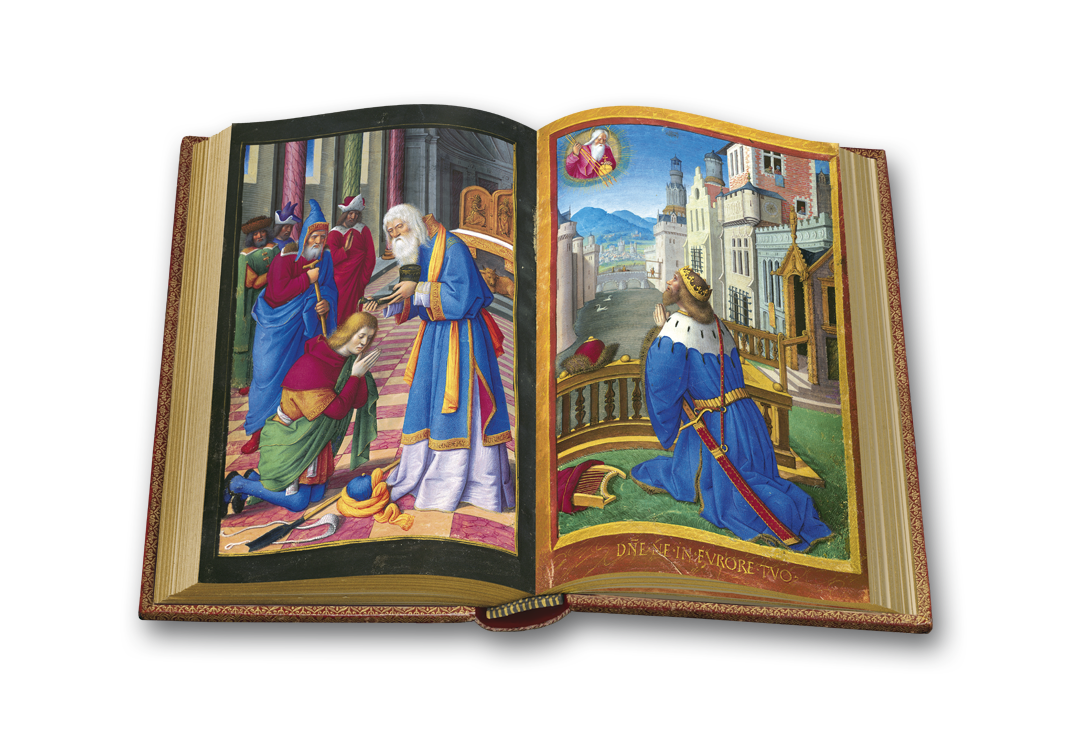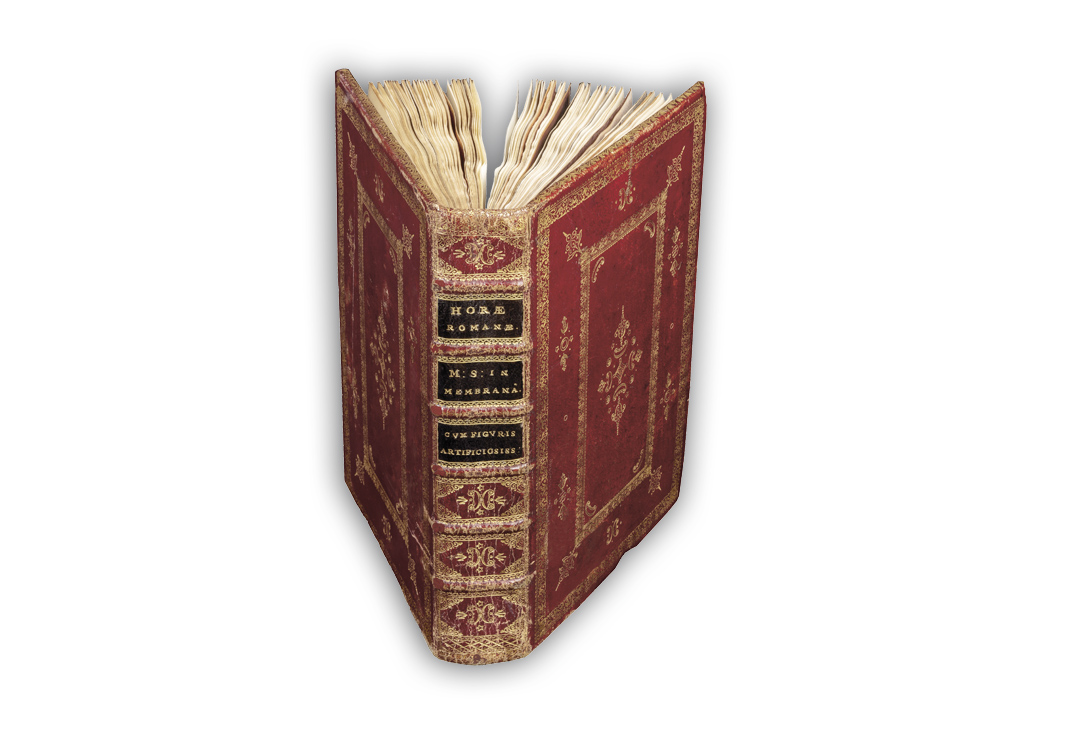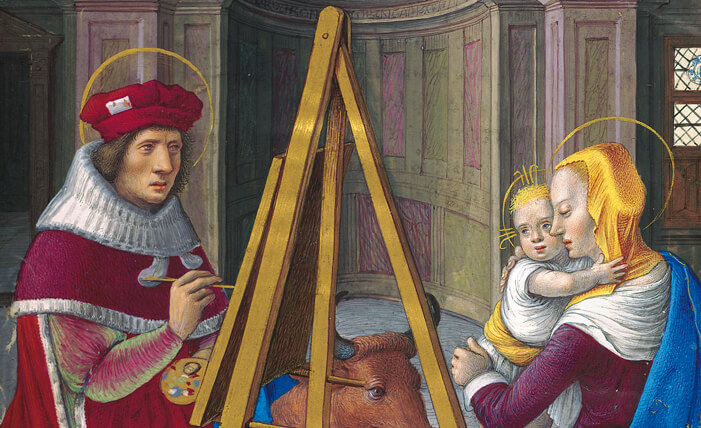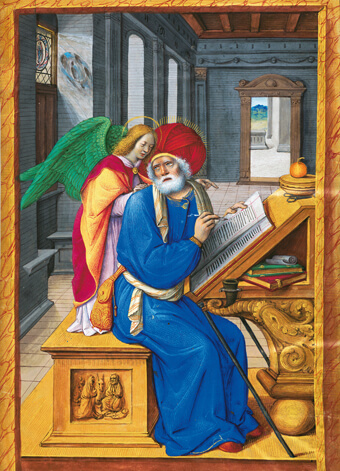
The Briçonnet Hours
Splendidly Colourful Panel Paintings in Book Form
The Briçonnet Hours is overpowering to the eye as its intense splendour of colour interplays with delicately glimmering gold. It offers an astonishing gallery of exclusively full-page miniatures that look like framed panel paintings. No other book does that! This is great art by a great master in a small format. The most meticulous paintings are achieved with the most delicate brushstrokes, which reproduce very precisely not only the individual facial features of the well-proportioned figures, but also the materiality of their garments. Moving about inside architectonic spaces and in front of still, expansive landscapes, saints and biblical figures radiate earnest dignity and singular fascination.
Briçonnet Hours
The Briçonnet Hours: The Manuscript
A Book of Hours as Paintings Gallery
The Briçonnet Hours was produced in Tours around 1485 and is new and unique in that the usual hierarchical pattern of books of hours is abandoned and the openings of minor texts also have large illuminations. The openings of the Office of the Virgin, of the Passion of St John, of the Penitential Psalms, and of the Office of the Dead are singled out by two adjacent full-paged miniatures which face each other. All twenty-five miniatures are very deliberately conceived as panel paintings in trompe l’oeil decorative frames that extend to the edges of the page. The resulting illusion is perfect. Anyone leafing through the Briçonnet Hours will revel in a gallery of paintings.
A Great Artist
The Briçonnet Hours was created by a master who was mentioned by his contemporaries in the same breath as artists such as Jean Fouquet, Rogier van der Weyden, Hugo van der Goes, Leonardo da Vinci, and Michelangelo: Jean Poyer. Born in Tours around 1445, he was one of the finest book illuminators and panel painters of the fifteenth century. He is documented as having worked for three kings of France and their wives between 1465 and 1503. The Briçonnet Hours was the first illuminated manuscript attributed to him. Jean Poyer’s work was recognizably influenced by the architecture and art of the Italian Early Renaissance, which he had seen with his own eyes.
A Mysterious Patron
Both the artist and the patron of the Briçonnet Hours are historically tangible figures, which is somewhat rare with manuscripts from the late Middle Ages, and hence a serendipity in the history of art. One hint about the patron is provided by the initial on fol. 10v. It shows the coat of arms of the aristocratic Briçonnet family. Possible patrons include Guillaume Briçonnet, born in Tours around 1445, who would become bishop, archbishop and cardinal. Under King Louis XI he earned a reputation for managing finances, and under the King’s son he rose to be Secretary of the Treasury and a member of the Council of State. He may have commissioned this book as a gift for his wife on that occasion.
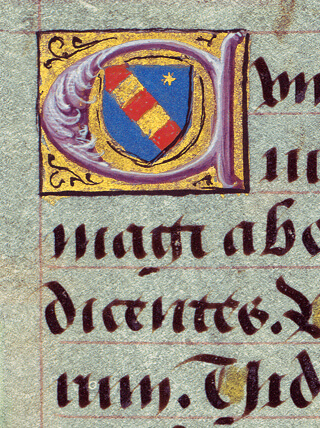
Briçonnet Hours
Under the Magnifying Glass: Colour, Proportion, Perspective – A Genius Painter
The Briçonnet Hours shows a painter of extraordinary talent at work. He has convincingly mastered his art, and his style is fully mature. Jean Poyer thrills the viewer of his miniature paintings with his very pronounced instinct for apt combinations of colours, clear proportions and the correct rendering of perspective. His great mastery is also demonstrated by his ability to differentiate the largely individualized faces and figures whose hair, beards, and garments are painted in great detail with countless delicate brushstrokes. Poyer’s surroundings at court appear to have sharpened his eye for precious fabrics and fashionable accessories in particular. He quite clearly placed great store in unusual headgear.
On fol. 10r, for example, the Evangelist Matthew is wearing a turban. The room in which he is writing his gospel while standing at a lectern is depicted in perfectly rendered perspective. His symbol, the angel, is looking over his shoulder and pointing at the text with his left hand. Is he calling attention to a mistake or explaining to him what he is writing? The image is so lucidly arranged that it can be grasped as a whole at a single glance. On closer inspection, fascinating details can then be discovered, such as the books under the lectern or the light from the stained-glass window reflected on the brick column. The intense colours are again unique: Matthew’s blue garment, the angel’s red cloak with a golden silk lining, and his green wings.
Briçonnet Hours
The Briçonnet Hours: The Edition
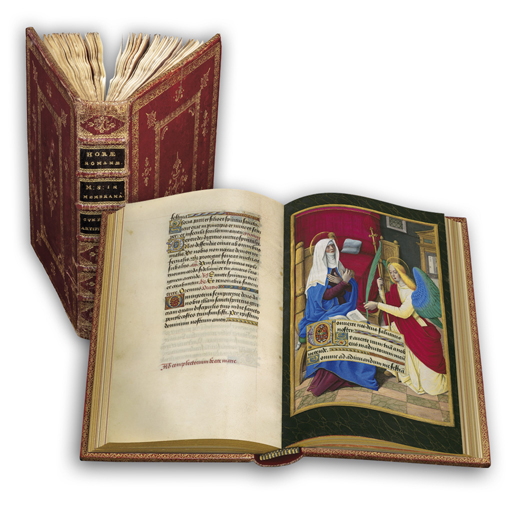
Manuscript and Facsimile at a Glance
The Briçonnet Book of Hours cannot be compared to any book of hours of its time because of its particular style of painting and its intense, almost glaring colours. The fidelity of the facsimile to the original enables one to feel in an authentic way the aura of this impressive manuscript.
Manuscript: Haarlem, Teylers Museum, Ms. 78
Date of Origin: c. 1485
Place of Origin: Tours
Dimensions: 21,0 x 14,5 cm
Extent: 288 pages (144 folios)
Artist: Jean Poyer
Patron: very probably Guillaume Briçonnet (d. 1514), Secretary of the Treasury of France, bishop and cardinal
Illumination: 25 full-page miniatures in powerful gleaming colours, decorated with gold heightening and silver, numerous gilded decorative initials with trompe l’œil precious stones and pearls, colourfully designed line-fillers on delicately painted gold grounds
Binding: decorative red leather binding with rich gold embossing on the front and back covers, spine and edges
Commentary volume by Mara Hofmann / Christine Seidel / Pierre-Gilles Girault / Roger S. Wieck
Limited edition: 680 copies
Briçonnet Hours
Enjoy Viewing a Few Sample Pages:
A Glance at the Facsimile
The excerpt of the Briçonnet Hours chosen for viewing reproduces the fols. 9r–12v with full-page miniatures. Each text page, written in an elegant lettre bâtarde, begins with a two-line decorative initial on a painted gold ground with floral decoration. The miniature pages show the Evangelists Matthew (fol. 10r) and Mark (fol. 11v) as well as the Old Testament story of the murder of Abner, who commanded King Saul’s army, by Joab, the leader of King David’s army (fol. 12v).
Briçonnet Hours
A Challenging Production: fac simile
Extraordinary Colours
The Briçonnet Hours is impressive for its extraordinary colours and contrasts: powerful shades of blue, red, green and a rich violet. The paints that Jean Poyer mixed in the fifteenth century had to be reproduced with the four-colour printing of the facsimile. Specific combinations of printing inks produce the desired colour when printed. It requires the great skill and experience of the lithographers to assess and determine which percentage of each colour each shade must have. Only after several test prints and comparisons with the original on site, followed by corrections, can print approval be granted.
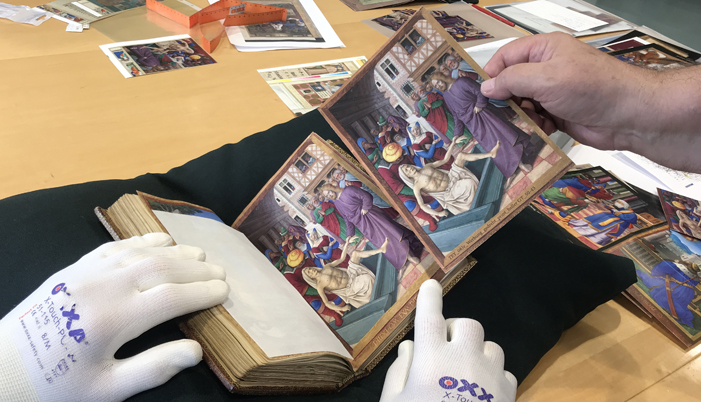
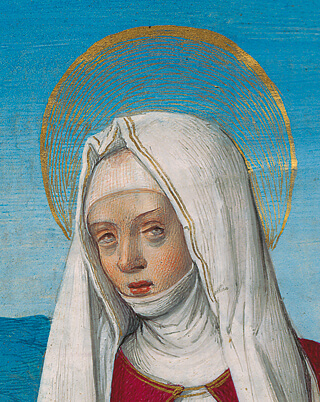
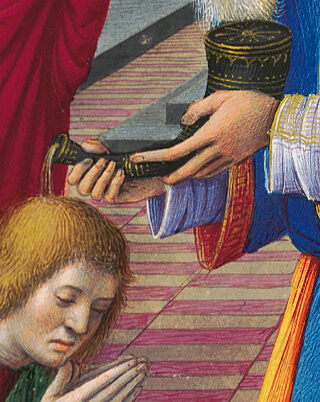
Delicately Gleaming Gold
With the Briçonnet Hours, it is not just the colours but also the delicate painted gilding that account for the particular quality of the facsimile. In the miniatures, various details are emphasized with golden heightening: halos, strands of hair, drapery, fabric patterns, smaller objects and tools, and architectural elements. Painted gilding is also found on the text pages: in decorative initials, capital letters, and line-fillers. The lithographer meticulously reproduces on the screen every single spot of gold on the digital photographs of the pages; it then has to be printed with precision in order to achieve an excellent result
Briçonnet Hours
The Facsimile Folder for the Edition
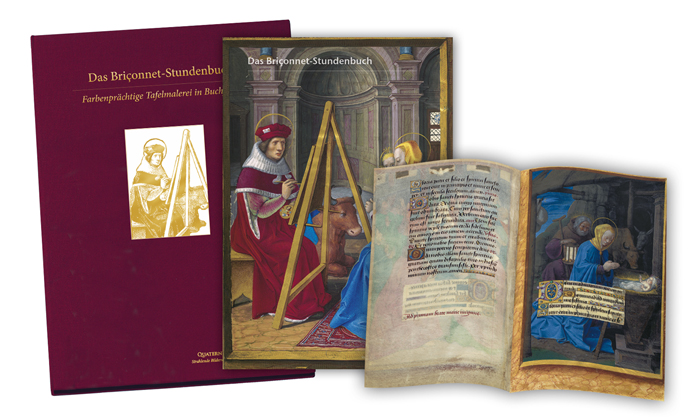
The hand-bound red facsimile folder for the Briçonnet Hours contains four original facsimile pages as double-page spreads that convey a first impression of the unusual magnificence of the colours and wealth of detail of this masterpiece. On fol. 39r, the full-page miniature framed like a panel painting for Pentecost shows a semi-circular interior with the twelve Apostles and the Virgin Mary. On fol. 40r, it is followed by the Christmas miniature in which the birth of Christ is depicted as a nocturnal scene that plays with light and reflections in a way that is as unusual as it is grand.
A 16-page informational brochure offers an introduction to the time when the manuscript was produced, provides information about the manuscript’s illuminator and patron, and explains the particular challenge of producing a facsimile faithful to the original.
Briçonnet Hours/span>
Order facsimile folder
Click here to go to the online shop (only available in German) where you can order the facsimile folder for the Briçonnet Hours edition. Or send us an email to info@quaternio.ch.
Request brochure
We would be glad to provide you with additional information regarding the facsimile edition of the Briçonnet Hours. Click here to order the brochure.




